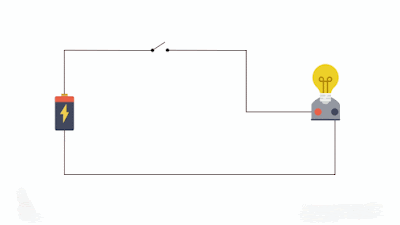Class 10th Science
Chapter 3 Metals and Non Metals
Topics in the Chapter
• Introduction
• Physical Properties
→ Metals
→ Non-Metals
• Chemical Properties of Metals
→ Reaction of metals with air
→ Reaction of metals with water
→ Reaction of metals with acids (Dilute)
→ Reaction of Metals with Solutions of other Metal Salts
• Reactivity Series
→ Reaction of Metals with Non-metals
• Ionic compounds
→ Properties of Ionic Compounds
→ Occurrence of Metals
• Extraction of Metals from Ores
• Steps Involved in Extraction of Metals from Ores
→ Important terms
→ Refining of metals
• Corrosion
→ Process of Prevention of Corrosion
Introduction
→ Elements can be classified as metals and non-metals on the basis of their properties.
• Examples of some metals are: Iron (Fe), Aluminium (Al), Silver (Ag), Copper (Cu)
• Examples of some non-metals are: Hydrogen (H), Nitrogen (N), Sulphur (S), Oxygen (O)
Physical Properties of Metal
1. Lustre: Metals have shining surface.
2. Hardness: They are generally hard. Except Sodium, Lithium and Potassium which are soft and can be cut with knife.
3. State Exist as solids, Except Mercury.
5. Ductility Metals can be drawn into thin wires.
6. Conductor of heat & electricity Metals are good conductors of heat and electricity. Silver (Ag) and Copper (Cu) Best conductors of heat. Lead (Pb), Mercury (Hg) poor conductor of heat.Physical Properties of Non Metals
1. Lustre: They do not have shining surface, Except Iodine.
2. Hardness: Generally soft, Except Diamond, a form of carbon which is the hardest natural substance
7. Density: Have low density and low melting point.
Chemical Properties of Metals
• Reaction of metals with air
→ Metals combine with oxygen to form metal oxide.
Metal + O2→ Metal oxide
Examples:
(i) 2Cu + O2 → 2CuO
(ii) 4Al + 3O2 → 2Al2O3
(iii) 2Mg + O 2 → 2MgO
The reactivity of different metals are different with O2.
→ Na and K react so vigorously that they catch fire if kept in open so they are kept immersed in kerosene.
→ Surfaces of Mg, Al, Zn, Pb are covered with a thin layer of oxide which prevent them from further oxidation.
• Reaction of metals with acids (Dilute)
Chloride anion
(ii) Melting and Boiling Point: They have high melting and boiling point.
(iii) Solubility : Generally soluble in water and insoluble in solvents such as kerosene, petrol etc.
(iv) Conduction of electricity : Ionic compounds conduct electricity in molten and solution form but not in solid stateMetals
• Occurrence of Metals
(i) Minerals: The elements or compounds which occur naturally in the earth’s crust are called minerals.
(ii) Ores: Minerals that contain very high percentage of particular metal and the metal can be profitably extracted from it, such minerals are called ores.
Extraction of Metals from Ores
Step1. Enrichment of ores.
Step2. Extraction of metals.
Step3. Refining of metals.
Steps Involved in Extraction of Metals from Ores
Gangue→ Roasting → Calcination →Reduction
• Important terms
(a) Gangue : Ores are usually contaminated with large amount of impurities such as soil, sand etc. called gangue.
(b) Roasting : The sulphide ores are converted into oxides by heating strongly in the presence of excess air. This process is called roasting.
2ZnS + 3O2 →(Heast) 2ZnO + 2SO2
c)Calcination : The carbonate ores are changed into oxides by heating strongly in limited air. This process is called calcination.
ZnCO3 →(Heat) ZnO + CO2
(d) Reduction : Metal oxides are reduced to corresponding metals by using reducing agent like carbon.
ZnO + C → Zn + CO
• Refining of metals
The most widely used method for refining impure metal is electrolytic refining.
(i) Anode : Impure copper
(ii) Cathode : Strip of pure copper
(iii) Electrolyte : Solution of acidified copper sulphate
→ On passing the current through electrolyte, the impure metal from anode dissolves into the electrolyte.
→ An equivalent amount of pure metal from the electrolyte is deposited at the cathode.
→ The insoluble impurities settle down at the bottom of the anode and is called anode mud.
Corrosion
The surface of some metals get corroded when they are exposed to moist air for a long period of time. This is called corrosion.
Examples:
(i) Silver becomes black when exposed to air as it reacts with air to form a coating of silver sulphide.
(ii) Copper reacts with moist carbon dioxide in the air and gains a green coat of copper carbonate.
(iii) Iron when exposed to moist air acquires a coating of a brown flaky substance called rust.
• Prevention of Corrosion
→The rusting of iron can be prevented by painting, oiling, greasing, galvanizing, chrome plating, anodizing or making alloys.
→ Galvanization : It is a method of protecting steel and iron from rusting by coating them with a thin layer of zinc.
→ Alloy : An alloy is a homogeneous mixture of two or more metals or a metal and a non- metal.
→ Examples of alloy:
(i) Iron : Mixed with small amount of carbon becomes hard and strong.
(ii) Steel : Iron + Nickel and chromium
(iii) Brass : Copper + Zinc(iv) Bronze : Copper + Tin (Sn)(v) Solder : Lead + tin
(vi) Amalgam : If one of the metal is mercury (Hg).
To get ppt click here Metals and non metals Class 10 science PPT

.jpeg)


.jpeg)

.jpeg)






.jpeg)
.jpeg)
.jpeg)



.gif)
.png)

.jpeg)
.gif)

.jpeg)
.gif)

.jpeg)
.jpeg)
.jpeg)

.jpeg)
.jpeg)
.jpeg)
.jpeg)
No comments:
Post a Comment